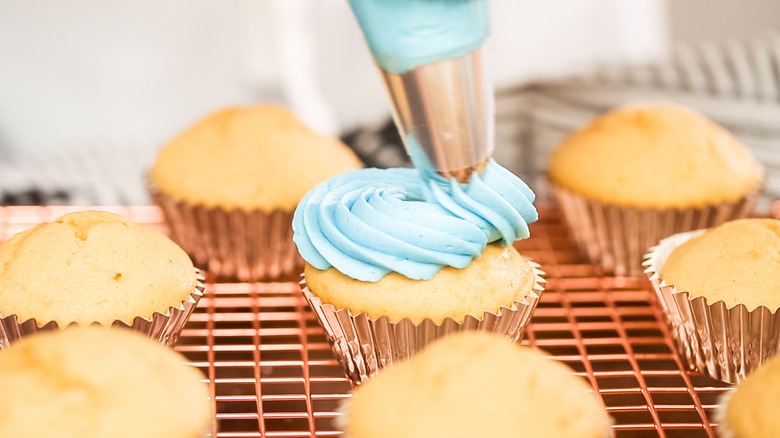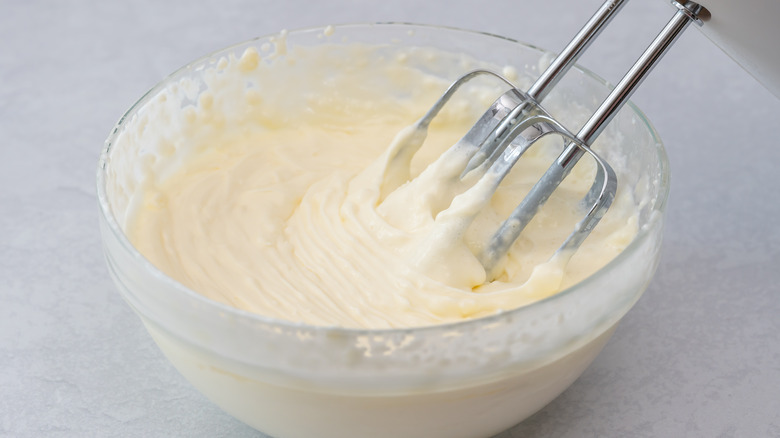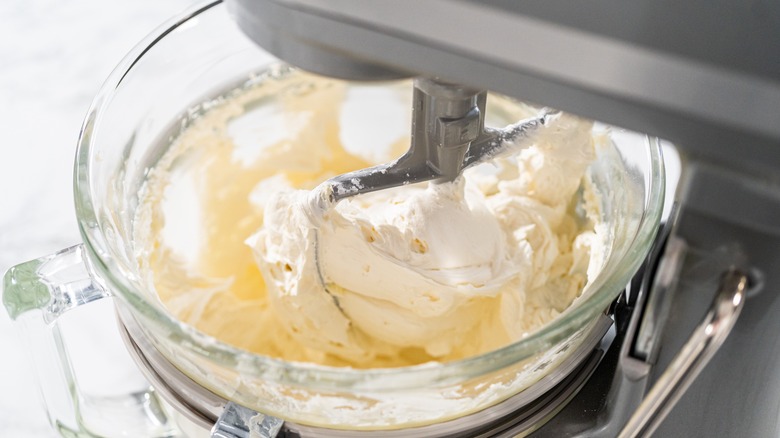The Simple Hack For Thickening Runny Icing Without Adding Anything
Whether you're making icing to frost cupcakes or embarking on a cake decor project to craft a standout rainbow layer cake to celebrate Pride month, the consistency and temperature of your frosting are key. The perfect frosting is velvety and thick enough to hold an array of piping techniques, yet spreadable enough to easily coat the cake without ripping crumbs off the sides.
However, even with the best of intentions and methods, we've likely all experienced some form of icing flop — that moment when you notice your frosting has turned slightly soupy, melty, or just too runny to pipe adorable stars with defined edges on your baking work of art. Some bakers will say you need to add more powdered sugar to absorb some of the extra moisture in a traditional American buttercream, or even add other ingredients like cornstarch.
Adding extra ingredients isn't always worth the fuss, however, and can alter the flavor of your frosting by making it taste extra sweet or starchy. Instead, if you find yourself with runny icing, there's a trick that doesn't involve altering your recipe at all: Simply chill your frosting in the fridge to firm it back up to an undeniably silky, thick consistency.
How to cool down your frosting
Giving a runny frosting a chance to chill in the fridge is a surefire way to help restabilize the sweet mixture. If your buttercream frosting looks limp and melty after you've completely whipped the butter, sugar, salt, and any other ingredients like milk, cream, or flavorings, this is your cue to stop mixing. Over-mixing could make it soupier.
Chill your runny frosting by transferring it — in its mixing bowl, with the mixing paddle or beaters included — to the fridge. Cover your bowl of frosting with plastic wrap or a lid to create an airtight container for the frosting to protect it from absorbing any odors in your fridge. Leave your icing in the fridge for about 10 minutes, or just enough to thicken it. Depending on your recipe and the level of runniness, you may need to leave it in the fridge a bit longer, so check on the consistency regularly by giving it a mix with a spoon. Once your frosting has firmed up, remix it for just a minute in the chilled mixing bowl, then it will be ready to use.
If you've already transferred your frosting to a piping bag prior to chilling, you can cool it in the fridge until it's firmed up, right in the bag. Either way, the result will be a creamy frosting that's no longer way too thin — no extra ingredients needed.
Other considerations for achieving velvety thick frosting
Using the icing-chilling hack is a great way to bring most frostings back to life, from buttercream to tangy cream cheese frosting. However, there are some additional ways to avoid getting an overly runny frosting in the first place.
For instance, it's important to ensure all your mixing equipment is chilled prior to making your frosting. Use softened (but not warm or melting) butter when making buttercream, and use cold milk or heavy cream when adding it to frosting. Equally important, it helps to avoid adding too much additional liquid to your frosting recipe. Instead of liquid fruit purées or juices to add color and fruity notes, opt for concentrated flavorings and natural food colorings.
On a record-breaking hot summer day, working with buttercream or whipped cream frostings that are prone to melting is especially tricky. While cooling the frosting down will be key in these environments, you can also opt to swap out the butter and try a new-to-you classic buttercream made with vegetable shortening (which will stay stable at higher temps because it has a higher melting point compared to butter).


